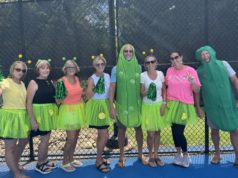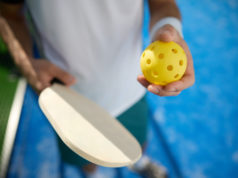By Page Love, MS, RDN, LD, CSSD and Rachel Stackhouse, MS
As summer continues, the temperatures will continue to increase. And as we know, living in the Southeast comes with high levels of humidity that create a perfect storm for dehydration issues and heat illness. We can combat this with proper hydration techniques to better prepare for this time of year.
Ways to assess hydration
There are different test options to assess hydration. Some popular tests include checking weight before and after activity, checking urine color, urine USG testing, and salivary osmolarity testing.
Checking weight before and after activity is a test you can do easily at home. Simply step on the scale before and after activity is completed, and the weight lost in that time is from fluid losses. One pound of sweat is equal to two cups of hydrating fluid. Be sure to accommodate this fluid volume loss within 1-3 hours after activity with electrolyte fluids.
Checking urine color is another simple, at-home test, except this test uses no equipment. If your urine has a pale yellow “lemonade” color, then you are properly hydrated. If your urine levels are a slightly darker yellow, you might be mildly hydrated. If you have a medium-dark yellow urine, that indicates dehydration. Lastly, if you are producing dark colored urine, that is a sign of severe dehydration. It is important to note that some foods, medications, and supplements, such as B vitamins, can change urine color.
Urine USG testing is another urine test; however, this one utilizes more advanced equipment. In this test, a urine sample is provided, and the specific gravity is measured using a urinalysis dipstick or refractometer. This test is more accurate when completed first thing in the morning.
Salivary Osmolarity is another test that uses more advanced equipment. It uses a handheld device that rapidly screens hydration before and after activity to identify hydration level. It reports both salivary osmolarity values in milliosmoles (mOsm) and a hydration classification into four categories: hydrated, mildly dehydrated, moderately dehydrated, and severely dehydrated.
What to drink before & after activity
For proper hydration, it is important to drink hydrating beverages well before activity, during activity, and after activity.
Before:
- Limit/avoid caffeinated beverages, especially right before match play.
- The night before playing, fill and chill squeeze bottles or sports jugs and bring them to each practice and match. Have a minimum of two liters available courtside.
- Consume enough fluids throughout the day so that urine is a light- or pale-yellow color.
- Drink 16-20 oz of fluid within four hours pre-match.
During:
- To keep performing your best, drink 8-12 oz of fluid every 10 to 15 minutes and/or every changeover.
- Favor sports drinks to enhance rehydration
- Sports drinks contain carbohydrates and electrolytes, like sodium.
- Consuming carbohydrates during play has been shown to help players maintain more power and accuracy in serving and groundstrokes in long match play.
After:
- Replace 150 percent of body fluids lost, or at least 24 oz per pound of weight loss, within 1-3 hours of a match.
- Continue to drink a sports beverage during this time.
Why drink sports drinks?
Sports drinks contain carbohydrates and electrolytes. Consuming carbohydrates during activity is important because it is quickly absorbed by working muscles. Additionally, electrolyte consumption will restore electrolyte losses that occur during strenuous exercise, which can enhance endurance. Sodium is the most important electrolyte in sports drinks because it is the main electrolyte lost through sweat. Sodium is normally added to sports drinks in the form of sodium chloride because chloride works with sodium in order to maintain fluid balance. Potassium is another important electrolyte due to its role in muscle function. When potassium levels are low, you are more likely to cramp during exercise.
Ideal sport beverage composition for the summer heat
When choosing a sport beverage, it must contain at minimum per 500ml or ½ liter.
- 200 to 300 mg of sodium
- 15 to 20 gms of carbohydrate
- 18-46 mg of potassium per 8 ounces of sports beverage.
Ultimately, as the temperature increases, so should your water intake. Keep these hydration requirements in mind to ensure better hydration and optimal performance. Stay cool with your summer tennis!
Page Love is an avid ALTA participant and sport dietitian/nutrition advisor for the WTA and ATP professional tours. She serves on the USTA sport science committee, consults with Resurgens Orthopaedics, and has a private practice in Sandy Springs. You can reach her at nutrifitga.com. Rachel Stackhouse is a dietetic intern with the Diet to Lifestyle Dietetic Internship. She just completed a master’s in nutrition with an emphasis in Sports Nutrition at Georgia State University and looks forward to working in dietetics in the near future!




